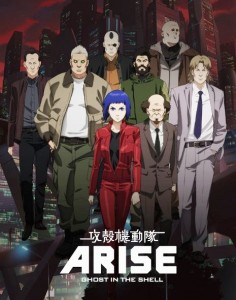JQ Magazine: J-POP Summit Festival Returns to San Francisco with Music, Fashion, Film
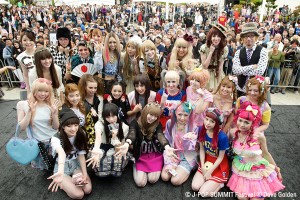
The annual J-POP Summit Festival returns to San Francisco July 19-20, featuring special performances from May’n and Tokyo Girls’ Style. (Dave Golden)
.
By Sam Frank (Wakayama-ken, 2004-06) for JQ magazine. Sam is the webmaster at the Jewish Community Federation in San Francisco.
Japan is a country that likes to borrow from another culture and make it their own. Punk rock, Spaghetti Westerns, and baseball are just a few things Japan has adopted over the years, and in 2009, the J-POP Summit Festival in San Francisco added a bona fide community event to that list. Similar to Coachella, Lollapalooza, and Outside Lands, the J-POP Summit Festival is an annual street fair held in the City by the Bay that celebrates Japanese popular culture. By introducing the latest in Japanese music, film, art, fashion, gaming, anime, food, as well as niche subcultures, the festival has become a prominent platform to showcase the latest trends and creative innovations from Japan.
“POP is our tradition” is the theme this year’s J-POP Summit Festival, which will be held in San Francisco’s historic Japantown district the weekend of July 19-20. Last year’s event welcomed more than 80,000 attendees, making it one of the largest Japanese festivals in the United States. While Japan is participating in America’s summer festival tradition, it has found a way to distinguish itself from the pack. Bringing together food, fashion, entertainment, and film promises to give the people of San Francisco a lasting impression of Japanese culture.
“Each year we strive to present a compelling mix of the hottest entertainment trends happening in Japan right now, and the J-POP Summit has become a wonderful and unique composite of pop and rock music, edgy kawaii-inspired fashion, modern graphic art, and film and anime content,” says Seiji Horibuchi, president/CEO of NEW PEOPLE, Inc. and chairman of the J-POP Summit Festival. “This year’s event promises to be another important milestone for the evolution of J-pop culture and its fan base in the U.S.”
Justin’s Japan: Nippon in New York — Kabuki at Lincoln Center, JAPAN CUTS, NY Mets, DJ Krush
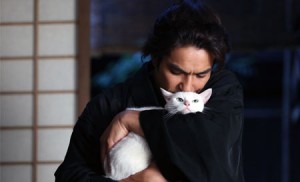
Neko Samurai ~Samurai ♥ Cat~ makes its international premiere as part of Japan Society’s annual JAPAN CUTS film festival July 19 with a live appearance by star Kazuki Kitamura. (© 2014 NEKO SAMURAI PRODUCTION COMMITTEE)
By JQ magazine editor Justin Tedaldi (CIR Kobe-shi, 2001-02) for Examiner.com. Visit his Japanese culture page here for related stories.
After you’ve seen the outdoor fireworks, enjoy some summer events in the cool indoors, whether it’s witnessing the return of one of the world’s most distinguished kabuki companies returning to New York after seven years, catching one of 20 films in Japan Society’s annual festival, or waiting for the bass to drop at a live performance from a legendary DJ.
July 7-12
Rose Theater, 10 Columbus Circle
$45-$190
The Heisei Nakamura-za company, which made its North American debut in a critically acclaimed and sold-out run during Lincoln Center Festival 2004, was founded by the illustrious Kanzaburo XVIII, the late patriarch of the Nakamura family—a veritable kabuki dynasty in Japan with an unbroken line of actors and innovators reaching back to the 17th century. For its Lincoln Center Festival engagement, the company has revived a rarely performed 19th-century ghost story, Kaidan Chibusa no Enoki (The Ghost Tale of the Wet Nurse Tree), about the murder of an artist by a handsome samurai who desires the artist’s wife. Running the emotional gamut from drama to uproarious slapstick comedy, and culminating in a thrilling fight-to-the-death beneath a waterfall, this is kabuki theater at its most engaging. Performed in Japanese with English synopsis via a headset.
July 10-20
Japan Society, 333 East 47th Street
$10-$20
North America’s biggest festival of new Japanese film returns for its eighth year, serving up a thrilling cross section of Japan’s diverse film cultures to New York audiences! Screening 27 features across 10 days, including co-presentations with the 13th New York Asian Film Festival, JAPAN CUTS premieres the best of recent action epics, genre oddities, touching dramas, warped comedies and cutting-edge arthouse cinema made in and around Japan. Plus, meet special guest stars and filmmakers during exclusive post-screening Q&As and raucous parties in Japan Society’s theater and atrium!
Friday, July 11, 5:30 p.m.
New York Mets Japanese Heritage Night 2014
Citi Field, 123-01 Roosevelt Avenue
Special seating $35-$72
For the fifth annual Japanese Heritage Night at Citi Field, the Mets take on the Miami Marlins for this special event. The pre-show kicks off at Mets Plaza outside with an explosive taiko set from New York’s own Soh Daiko, followed by the Mets Spirit Awards inside the stadium given to honored members of the New York Japanese and Japanese American community. Prior to the first pitch at 7:00 p.m., the Japanese Men’s Choir will perform our national anthem. A portion of the proceeds from each ticket bought will go to Japanese community charities through the Japanese American Association of New York. Be sure to look for fun Japanese activities and games throughout the evening at the special tables on the main concourse behind the giant video screen. Price of ticket includes a free T-shirt!
For the complete story, click here.
WIT Life #271: New York Japan Cinefest at Asia Society
WIT Life is a periodic series written by professional Writer/Interpreter/Translator Stacy Smith (Kumamoto-ken CIR, 2000-03). She starts her day by watching Fujisankei’s newscast in Japanese, and here she shares some of the interesting tidbits and trends along with her own observations.
Last week I went to the 3rd annual New York Japan CineFest held at Asia Society. It featured six short films ranging in length from 4-30 minutes, many of which had already received awards at other film festivals. I attended with fellow JET alums, so it was fun to dissect the films together and relate them to our respective Japan adventures. The event opened with The Misadventures of Incredible Dr. Wonderfoot, and directors Grier Dill and Brett Glass were on hand to offer an introduction.
In addition, two of the movie’s stars, Tsukasa Kondo and Tadashi Mitsui, also shared their experiences of making the film. The former is actually one of the creators and stars of the web series Second Avenue, which follows two 20-something Japanese roommates in Brooklyn, an aspiring actress and a Japanese gay law student (played by Kondo). The first season of six episodes (mostly in Japanese with subtitles) are really entertaining, especially for viewers who understand Kansai-ben .
.
It was fun to watch the quirky podiatrist Dr. Wonderfoot, but my personal favorite out of all the flicks (and audience award recipient) was one of the concluding films, Little Kyota Neon Hood (I also liked the final film Lil Tokyo Reporter that was based on the true story of L.A. Japanese-American community leader Sei Fujii). This film takes place in Tohoku and features 10-year old Kyota who is suffering from Read More
JQ Magazine: Heisei Nakamura-za Kabuki Returns to NYC This Summer
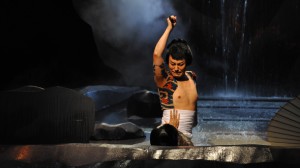
After a seven year absence, Heisei Nakamura-za brings Kabuki to New York’s Lincoln Center Festival July 7-12. (© Shochiku)
By Mark Frey (Kumamoto-ken, 2002-06) for JQ magazine. Mark served as the editor for JETAA Northern California’s Pacific Bridge newsletter from 2007-11, and is currently chapter president as well as coordinator of the JETAANC Kabuki Club.
A warm thought to heat you up as the Fourth of July approaches: real, live Kabuki is coming back to New York City July 7-12 as part of the annual Lincoln Center Festival.
This is great news for Kabuki fans in America. And if you were ever curious about Kabuki, it is a rare chance to see the real thing in your own backyard. The performance is part of a very interesting project called “Heisei Nakamura-za,” which was started about a decade ago by the late, great Kabuki actor Nakamura Kanzaburo, who passed away unexpectedly at age 57 in December 2012.
Kanzaburo wanted to give audiences the chance to experience Kabuki the way it used to be in the “good old days” of the Edo period. Back then, Kabuki was a popular entertainment for the common people. It featured smaller theaters, a more intimate relationship between actor and audience, and a more festive, earthy, raucous feel. So Kanzaburo started constructing temporary theaters in Japan and around the world that reflected this atmosphere. He extended the mood to the plays he staged, putting a contemporary spin on old classics.
In 2012, this reporter was fortunate enough to be able to see Kanzaburo perform in the last Heisei Nakamura-za theater he constructed, in Tokyo’s Asakusa district. It was an unforgettable experience. Some of the best actors of our day were walking a couple feet away from me on the theater’s modest hanamichi runway. A special energy flowed between the actors and the audience that I hadn’t felt at established Kabuki theaters. At the end of the final play, the entire back wall of the theater disappeared and we enjoyed a beautiful, open-air night view of the Sumidagawa River and the newly constructed Skytree Tower. It was a magical evening.
Justin’s Japan: ‘Ghost in the Shell,’ Kishi Bashi, Luna Haruna at AnimeNEXT
By JQ magazine editor Justin Tedaldi (CIR Kobe-shi, 2001-02) for Examiner.com. Visit his Japanese culture page here for related stories.
After an unusually chilly spring, it’s finally starting to feel like summer. Enjoy some seasonal events this month that celebrate the best of both fine art and pop art.
This month’s highlights include:
Wednesday, May 28, 10:00 p.m.
The Bowery Electric, 327 Bowery
$5
An all-female quartet that delivers riff-heavy, post-punk anthems, Each of the Hard Nips came to live in New York at different times, from different parts of Japan. And, as conspired by the ever-dexterous hand of fate, they were to cross paths and become fast friends. They quickly formed a cult-like bond whose rituals all included drinking a lot of alcohol and uncontrollably running their mouths. The wine flowed like Kool-Aid and, somehow, they found themselves buying into the delusion that they were capable of forming a kick-ass rock band. Witness the next chapter in their story, with support from Shakes and the Johnnys.
Thursday, May 29, 7:30 p.m.
Ghost in the Shell: Arise – Borders: 1 & 2
AMC Loews Village 7, 66 Third Avenue
$10
In the first two parts of this highly anticipated prequel series of the anime sensation Ghost in the Shell, it’s the year after the fourth World War and cyborg/hacker Motoko Kusanagi finds herself wrapped up in the investigation of a devastating bombing. But she’s not the only one looking for answers—as she delves deeper into the mystery of who is behind the attack, a specialized team unlike any before begins to take shape.
June 6-8
Garden State Convention Center, 50 Atrium Drive, Somerset, NJ
$45-$60
The largest independently organized anime convention in the New York/New Jersey metropolitan area. AnimeNEXT features Japanese creators of anime and manga, voice actors, musical acts, artists, vendors and exhibits, events, panels, workshops, and gaming. This year’s musical guest is Tokyo’s Luna Haruna, who made her major debut in 2012 with the song “Soraha Takaku Kazeha Utau,” the ending theme song for the second season of anime series Fate/Zero. Her latest single, “Snowdrop,” was featured as the ending theme song the second season of Monogatari. Don’t miss her first-ever performance on the East Coast!
For the complete story, click here.
WIT Life #269: Japan Day @ Central Park
WIT Life is a periodic series written by professional Writer/Interpreter/Translator Stacy Smith (Kumamoto-ken CIR, 2000-03). She starts her day by watching Fujisankei’s newscast in Japanese, and here she shares some of the interesting tidbits and trends along with her own observations.
Japan Day @ Central Park celebrated its 8th year this past Sunday, and 50,000 attendees came out on this warm, beautiful day. As it coincided with Mother’s Day, many families enjoyed the events together. In addition to the free food and culture booths, an assortment of performances were featured on the main stage. There was some stellar taiko drumming and an interesting Matrix-like duo, but many in the crowd were waiting excitedly for the crooner Jero, who I wrote about and got to interview when he came to Japan Society two years ago.
This Pittsburgh native began his career singing enka (Japanese traditional ballads) as a youngster with his Japanese grandmother, and his official career started in Japan six years ago. Jero treated the audience to his debut single 海雪 (Umiyuki or Ocean Snow) as well as Read More
Justin’s Japan: Nippon in New York — Asa Akira, ‘Monkey Business,’ Jero @ Japan Day, Peelander-Z
By JQ magazine editor Justin Tedaldi (CIR Kobe-shi, 2001-02) for Examiner.com. Visit his Japanese culture page here for related stories.
As spring continues and the weather continues to warm, New Yorkers can enjoy activities all over the city both indoors and out.
May 2-3, 7:30 p.m.
Veggetti, Kato and Nakamura Project IX – Pleiades
Japan Society, 333 East 47th Street
$30, $24 Japan Society members
Two Japanese tour de force artists, acclaimed musician Kuniko Kato, praised by Steve Reich as a “first rate percussionist,” and dancer Megumi Nakamura, internationally known since her days with Jiří Kylián’s Netherlands Dance Theater, explore the mesmerizing scores of legendary 20th century composer Iannis Xenakis (1922-2001). Project IX – Pleiades, which features one of Xenakis’ most complex and ambitious pieces, Pléiades, is a multimedia work delivered through live performance and a state-of-the-art sound/projection installation. Directed by Italian choreographer Luca Veggetti, one of the featured artists in the 2014 NY PHIL BIENNIAL. The Friday, May 2 performance is followed by a MetLife Meet the Artists Reception.
Saturday, May 3, 2:00 p.m.
Monkey Business: Japan/America Writers’ Dialogue
Asia Society, 725 Park Avenue
$15, $12 seniors/students, $10 Asia Society and PEN members
In conjunction with PEN World Voice Festival 2014! For the past three years PEN World Voices and Asia Society have provided a place for dialogues between established and upcoming writers in the United States and Japan. This year Laird Hunt and Matthew Sharpe join Toh EnJoe and Hideo Furukawa for another exciting and provocative cross-cultural literary encounter between Japanese and American writers. Moderated by Motoyuki Shibata and Ted Goossen, editors/translators of Monkey Business, the English-language anthology of newly translated Japanese writing, now celebrating its fourth edition.Ticket price includes a copy of the book and signing following the program. For additional free readings taking place in Manhattan and Brooklyn, click here.
Tuesday, May 6
Insatiable: Porn—A Love Story by Asa Akira
$25 MSRP
At age 28, Asa Akira has already led an extremely unusual life. Born in New York and raised in Japan as a pre-teen, then coming of age at the prestigious United Nations International School in Manhattan, she eschewed the academic aspirations of her classmates and soon was earning a good living by stripping and working as a dominatrix at a sex dungeon. Akira has now built up a reputation for being one of the most popular, hardworking, and extreme actors in the adult entertainment industry, winning dozens of awards and appearing in nearly 400 films to date and the popular DVDASA podcast. In her debut book, Akira provides an inimitable voice from the inside in a world where porn is increasingly becoming part of the mainstream.
For the complete story, click here.
JETAA UK Careers Seminar May 20 with Ex-JET British Consul General Western Japan and Japan Related Companies
Posted by blogger and podcaster Jon Dao (Toyama-ken, 2009-12). Click here to join the JETwit Jobs Google Group and receive job listings even sooner by email.
[Steve’s Note: Not a job listing, but part of an ongoing effort by JETAA UK to help with the job search for those in the UK.
Note on US-UK translation: “JET alum” in the US = “Ex-JET” in the UK. I’ve been told that using the word “alumni” in the UK is associated more with universities and sounds strange in the context of something like the JET Program(me). Well, as the Japanese saying goes, “Ten people. Ten colo(u)rs.” ;-]
————————————————————————————————————
Overview:
WIT Life #267: Japan’s underutilized female resources
WIT Life is a periodic series written by professional Writer/Interpreter/Translator Stacy Smith (Kumamoto-ken CIR, 2000-03). She starts her day by watching Fujisankei’s newscast in Japanese, and here she shares some of the interesting tidbits and trends along with her own observations.
Early this month I attended a Japan Society event regarding empowering women in the U.S. and Japan. The featured speakers were former Diet member, Minister of the Environment and Minister of Foreign Affairs Yoriko Kawaguchi, and Morgan Stanley Chief Financial Officer Ruth Porat. The conversation was moderated by Columbia Professor of History Carol Gluck, a Japanologist who has written several books on Japanese history. Some of the topics to be addressed were gender disparity issues, using quota systems to increase numbers of women executives and work-life balance, so it was guaranteed to be an interesting discussion.
Kawaguchi pointed out that a mentality change on the part of both employers and women themselves is needed. M![kate_hesson_juggles_work_and_family__1610129638[1]](http://jetwit.com/wordpress/wp-content/uploads/2014/04/kate_hesson_juggles_work_and_family__16101296381-150x150.jpg) any Japanese women strive for nothing more than having a happy, healthy family, not even conceiving that they could reach the levels of upper management. Of course, this creates a chicken and egg scenario as there are few female role models in these positions so they don’t have many predecessors in whose footsteps they can follow. Porat remaked that when she started out there were few female managers she could look up to, but credited her advancement partially to male superiors who recognized her skills and took a chance on her. Kawaguchi stressed that there is a Read More
any Japanese women strive for nothing more than having a happy, healthy family, not even conceiving that they could reach the levels of upper management. Of course, this creates a chicken and egg scenario as there are few female role models in these positions so they don’t have many predecessors in whose footsteps they can follow. Porat remaked that when she started out there were few female managers she could look up to, but credited her advancement partially to male superiors who recognized her skills and took a chance on her. Kawaguchi stressed that there is a Read More
Via JETAA UK. Posted by blogger and podcaster Jon Dao (Toyama-ken, 2009-12). Click here to join the JETwit Jobs Google Group and receive job listings even sooner by email.
————————————————————————————————————
Overview:
DISCO will be hosting a London Career Forum at the Olympia Conference Centre in London on June 7-8, 2014, bringing together low to high profile Japanese and European companies who are recruiting local Japanese-English bilingual students and professionals. Read More
WIT Life #266: Kajitsu Spring Tasting Reception
WIT Life is a periodic series written by professional Writer/Interpreter/Translator Stacy Smith (Kumamoto-ken CIR, 2000-03). She starts her day by watching Fujisankei’s newscast in Japanese, and here she shares some of the interesting tidbits and trends along with her own observations.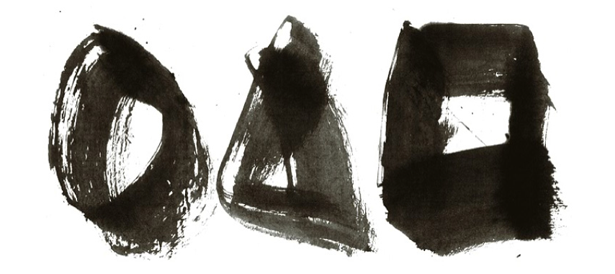
Over the weekend I had the chance to take part in the delectable Spring Tasting Reception held at Kajitsu/Kokage. For those of you who don’t know this spot, it’s about as close as you can get to Japan here in NYC. Last year I celebrated my birthday with a delicious meal at Kajitsu, the restaurant on the upper floor featuring 精進料理 (shojin ryouri), vegan cuisine devised centuries ago by Buddhist monks which was the predecessor to kaiseki .
In the first four years of its existence Kajitsu was located in the East Village, but it moved to its midtown location a year ago. Aside from Kajitsu occupying the second floor, Kokage on the first floor serves non-vegetarian Japanese food and Ippodo near the entrance sells Japanese tea. There is literally something for everyone, and both restaurants are open for both lunch and dinner.
This event was celebrating the promotion of the Executive Sous Chef Hiroki Odo to Executive Chef, as current Executive Chef Ryota Ueshima is returning to Japan. The amazing spread featured Read More
Justin’s Japan: Nippon in New York — Miyazaki, Godzilla, Tribeca Film Festival, Sakura Matsuri

New York’s 33rd annual Sakura Matsuri will be held at Brooklyn Botanic Garden April 26-27. (Mike Ratliff)
By JQ magazine editor Justin Tedaldi (CIR Kobe-shi, 2001-02) for Examiner.com. Visit his Japanese culture page here for related stories.
Spring has sprung in the Big Apple, and that means one thing: a new season of sounds, colors, and spectacular performing arts to match the blossoming sakura trees throughout the city.
This month’s highlights include:
Tuesday, April 8
Turning Point: 1997-2008 by Hayao Miyazaki
MSRP $29.99, $34.99
The companion second volume to the earlier chronicleStarting Point: 1979-1996 (also new in paperback),Turning Point is an insightful collection of essays, interviews, memoirs, and illustrations from legendary animation director Hayao Miyazaki. The new title covers the critical stage in the legendary director’s career when his animated films for Studio Ghibli such as Princess Mononoke, Spirited Away, and Ponyo began to garner a significant international audience. Turning Point follows Miyazaki as his grand vision continued to mature, cinema-lovers worldwide discovered and embraced his creations, and prominent film critics such as Roger Ebert delivered tremendous acclaim for the director’s films. Bringing us up to the present is The Art of The Wind Rises, which captures the art of the film from conception to production, featuring in-depth interviews with the creative team from Miyazaki’s latest—and supposedly final—Academy Award-nominated epic.
April 8-13, 8:00 p.m. and 10:30 p.m.
Gary Burton & Makoto Ozone Duets
Blue Note Jazz Club, 131 West Third Street
$20, $35
Born in Kobe to a jazz organist father, Makoto Ozone came to Boston in 1980 to study at the Berklee College of Music, where multi-Grammy Award-winning vibraphonist Gary Burton was a composition and percussion instructor. After graduation he made his first American solo appearance in 1983 with a recital at Carnegie Hall. The incredibly talented young man struck a record deal with CBS, making his international debut in 1984 with the album OZONE. Burton and Ozone have been collaborators in the duet format for over two decades and recorded the Grammy-nominated Virtuosi in 2002. The versatile Ozone has hosted a TV series in Japan, ventured into electronics, and composed for and played with classical orchestras in addition to working with his own jazz trio from his home in New York.
Wednesday, April 9, 8:00 p.m.
Carnegie Hall, 881 Seventh Avenue
$22.50-$140
Praised by the New York Times when she last appeared at Carnegie Hall as “among the most respected artists of our time” for her “probing and magisterial performances” of Schubert’s last three sonatas, pianist Mitsuko Uchida returns to perform his “Reliquie” Sonata, once mistakenly thought to be the composer’s final work. Also on the program is Beethoven’s all-encompassing and transcendent Thirty-Three Variations on a Waltz by Diabelli.
For the complete story, click here.
[Google Japan] Recruiting Seminars in NYC – April 7 & 9
Thanks to JET alum Anne Koller, who used to work for Google, for passing this on. Note that the deadline to register is March 30. Posted by blogger and podcaster Jon Dao (Toyama-ken, 2009-12). Click here to join the JETwit Jobs Google Group and receive job listings even sooner by email.
————————————————————————————————————
Overview:
Google Japan is looking for fabulous bilingual potential Japan Googlers who can help grow one of the top 5 markets globally in the fields of online advertising and partnerships, enterprise and marketing. We are trying to tap into global talent pools to achieve this goal. Read More
WIT Life #265: NY Peace Film Festival
WIT Life is a periodic series written by professional Writer/Interpreter/Translator Stacy Smith (Kumamoto-ken CIR, 2000-03). She starts her day by watching Fujisankei’s newscast in Japanese, and here she shares some of the interesting tidbits and trends along with her own observations.
This past weekend I had the opportunity to attend the NY Peace Film Festival co-hosted by my lovely friend Yumi Tanaka. This year highlighted 11 films over the course of the weekend, many with Q&As with their directors following the screenings. I was lucky enough to be able to interpret for two of the Japanese filmmakers who were Skyped in from Japan for their Q&As (a first for me!). Saturday night featured the documentaries The Targeted Village by Chie Mikami and X Years Later by Hideki Itoh.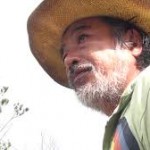
The first film focuses on a small village in Okinawa called Takae, which happens to be situated between two American military bases. Residents are fighting against the construction of new helipads in Takae, being installed in preparation for the deployment of Osprey. Their story embodies U.S. military strategy dating back to the Vietnam War, the blocking of the gates to the Futenma base, and their town’s rage against their state.
Depicted here is one of the main characters profiled in the film, a local farmer and father of 4 who just wants to ensure that his children can continue to live their quiet lives. In one scene his young son asks how they will be able to study at school with all the noise from the Osprey flying overhead. The farmer takes part in protests again the helipad construction, and unbelievably the Japanese government brings a case of “traffic obstruction” against not only him and several other peaceful protesters but his 7-year old daughter who was Read More
WIT Life #264: Campaign
WIT Life is a periodic series written by professional Writer/Interpreter/Translator Stacy Smith (Kumamoto-ken CIR, 2000-03). She starts her day by watching Fujisankei’s newscast in Japanese, and here she shares some of the interesting tidbits and trends along with her own observations.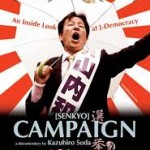
Yesterday I went to see director Kazuhiro Soda’s documentary Campaign (選挙) at Japan Society, being shown as part of Richie’s Electric Eight: The Bold and the Daring (part 2 of the film series honoring Ritchie that I talked about in a recent post). It came out in 2007 and was screened at the Berlin Film Festival that year, and was loved by Ritchie who introduced it at a preview at Tokyo’s Foreign Correspondents Club of Japan. This fascinating, self-funded film follows Soda’s Tokyo University (東大) classmate Kazuhiko Yamauchi in becoming the LDP candidate in a by-election for a seat on the Kawasaki City Council, after relocating there from Tokyo for that purpose. Campaign tells the story of how Yamauchi is groomed as a promising newcomer for this well-established conservative party. The LDP is killing it with Prime Minister Junichiro Koizumi and his reform platform on the national level, but engaged in a close battle with the DPJ on the local level.
Yamauchi’s education extends to his wife Sayuri, a particularly interesting character in the film. He is instructed to refer to her as his “housewife” (「家内」 or kanai) as opposed to “wife” (「妻」 or tsuma), a term they both take umbrage against but become resigned to using. In addition, Yamauchi’s supporters within the LDP’s well oiled local political machine later encourages her to quit her job to focus on her husband’s political career, an idea that outraged her. Yamauchi urges her to Read More

